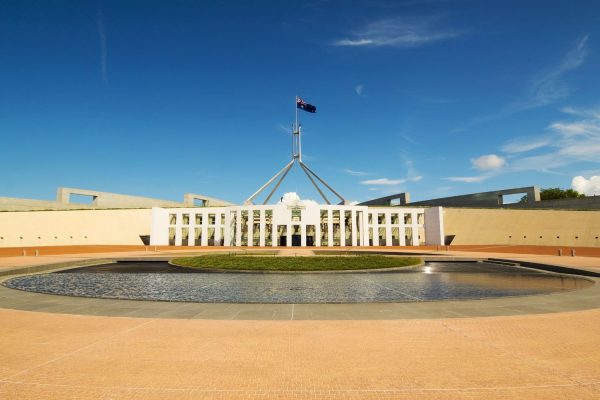Written by Dr Melissa Wheeler and Dr Vlad Demsar.
Campaigns to signal a company’s moral position may be met with skepticism.
Key points:
- The consumers of today care about more than just product performance or quality.
- They want to know how the companies they support contribute to society and the planet.
- Companies are building brand identities and engaging in communication campaigns which signal their moral goodness, called virtue signaling.
- Virtue signaling can be met with positivity or disdain, depending on how it is perceived by consumers.
Consumer preferences are changing.
Today’s consumers, particularly younger generations, care about more than just product performance or quality. They also want to know, for example, how materials are sourced, how employees are treated, and how a company contributes to the betterment of broader social, environmental, and economic outcomes. With brand transgressions increasingly visible in the social media domain, consumers are more skeptical and cynical about brand motives than ever before. There is an ever-present danger that even brands who genuinely do the right thing will be publicly shamed or even “canceled” for any previous transgressions if brought to light on social media.
Virtue Signaling vs. Moral Grandstanding
In response to shifting consumer attitudes, companies are increasingly building brand identities and engaging in communication campaigns that signal their contributions to the public good, society, or the environment. This broadcasting is known as “virtue signaling.”
Virtue signaling is the articulation of a brand’s moral position to imply its integrity and to enhance its standing, without explicitly stating that it is virtuous. This marketing tactic allows brands to identify with a cause that is important to their target audience, signaling that the brand has a purpose beyond selling products and services for profit.
The danger for brands is that attempts at virtue signaling can come across as either authentic or as moral grandstanding. Moral grandstanding involves engaging in discourse that aims to convince others that one is morally respectable, and is often used as a pejorative term for virtue signaling. The risk of virtue signaling is that a brand can come across as superficially aligning itself with social causes to resonate with audiences and ultimately sell more products and services.
Examples of successful and unsuccessful campaigns are abundant. A recent paper highlighted how brands attempted to signal virtue at the start of the COVID-19 pandemic through mass broadcast messaging which reminded consumers that “these are unprecedented times” and “we are all in this together.” The sheer volume of ads using these messages cheapened the effects of these virtue-signaling approaches, which were mocked by consumers on social media. Other brands, however, have signaled virtue more successfully by using messaging frames that express gratitude to consumers, staff, and frontline health workers for their efforts in keeping the community safe by following public health orders and working hard to help others.
Similar attempts span many diverse industries and social causes. The public focus on climate change and sustainability means that some brands are positioning themselves as contributing to sustainable consumption practices. For example, Patagonia’s “don’t buy this jacket” campaign is an attempt to signal its values and moral stance on throw-away fashion culture by encouraging consumers not to purchase more than they need. The brand also urges consumers to send items in for repair and donate them for secondhand consumption rather than contributing to landfills. Likewise, in the finance industry, Bank of Australia, a certified B-Corp, positions itself as a “responsible bank” and runs a series of virtual signaling campaigns which state that “people who believe money should be used for good are the people Australia needs.”
While a brand can align itself with and support social causes, ultimately, its existence relies on generating revenue and profit. As such, positioning a brand as virtuous is a challenging and, at times, paradoxical task for marketing practitioners.
Navigating the Paradox of Virtue Signaling
Though virtue signaling is fraught with potential pitfalls, marketers can navigate this type of positioning strategy more effectively through risk assessment of campaigns, using the right message frames, and with consistent evidence of contributions. Specifically:
- The internet and social media are an archive for previous brand transgressions. Consumers use this to verify whether a brand’s current communication messages contradict its previous behavior. Brands must develop risk registers to ensure they are aware of past mistakes which could potentially be used as counterarguments for virtue-signaling campaigns.
- Contrasting messages of “we are all in this together” at the start of the pandemic versus expressions of gratitude toward consumers, staff, and health workers 12 months later highlights the importance of message framing. Choosing the right message frame can be the difference between a virtue-signaling campaign being interpreted as genuine or superficial by consumers.
- Increasing consumer skepticism means it is not enough to simply create marketing campaigns containing messages of virtue. Consumers will actively look to verify that the brand is delivering on its positioning. This means the brand must consistently implement this strategy across all aspects of its operation and show tangible evidence of how it is contributing to that cause.
Marketers must also keep in mind that virtue-signaling will not resonate with all audiences. Some messages with social justice connotations will be applauded by left-leaning consumers, while more conservative consumers may be turned off by the same message, preferring instead a company that signals traditional values and a sense of respect. Nevertheless, if your audience holds strong values in relation to specific social, environmental, or economic issues, resonating with them with virtue signaling is an effective strategy, though one which can easily backfire, if implemented without consideration and authenticity.
References
Demsar, V., Sands, S., Campbell, C., Pitt, L. (2021). “Unprecedented,” “extraordinary,” and “we’re all in this together”: Does advertising really need to be so tedious in challenging times? Business Horizons, 64, 415-424.
Wheeler, M. A., & Laham, S. M. (2016). What we talk about when we talk about morality: Deontological, consequentialist, and emotive language use in justifications across foundation-specific moral violations. Personality and Social Psychology Bulletin, 42(9), 1206-1216.
Fournier, S., & Avery, J. (2011). The uninvited brand. Business horizons, 54(3), 193-207.
Tosi, J., & Warmke, B. (2016). Moral grandstanding. Philosophy and Public Affairs, 44(3), 197-217.
Wallace, E., Buil, I., & De Chernatony, L. (2020). ‘Consuming good’ on social media: What can conspicuous virtue signalling on Facebook tell us about prosocial and unethical intentions? Journal of Business Ethics, 162(3), 577-592.
Notes
This article first appeared on Psychology Today. Original article: https://www.psychologytoday.com/au/blog/ethically-speaking/202109/the-paradox-virtue-signaling




